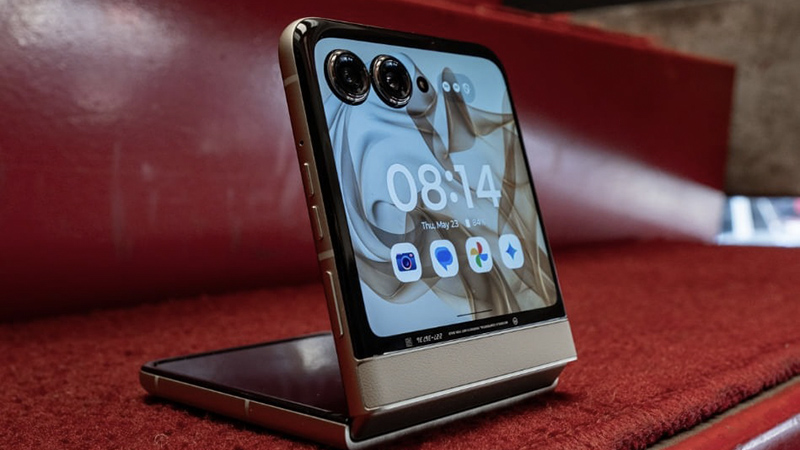Google Pixel 7 vs. Pixel 7 Pro: Which should you buy?
With exciting hardware and camera upgrades, Google's 2022 flagships have a lot to offer.
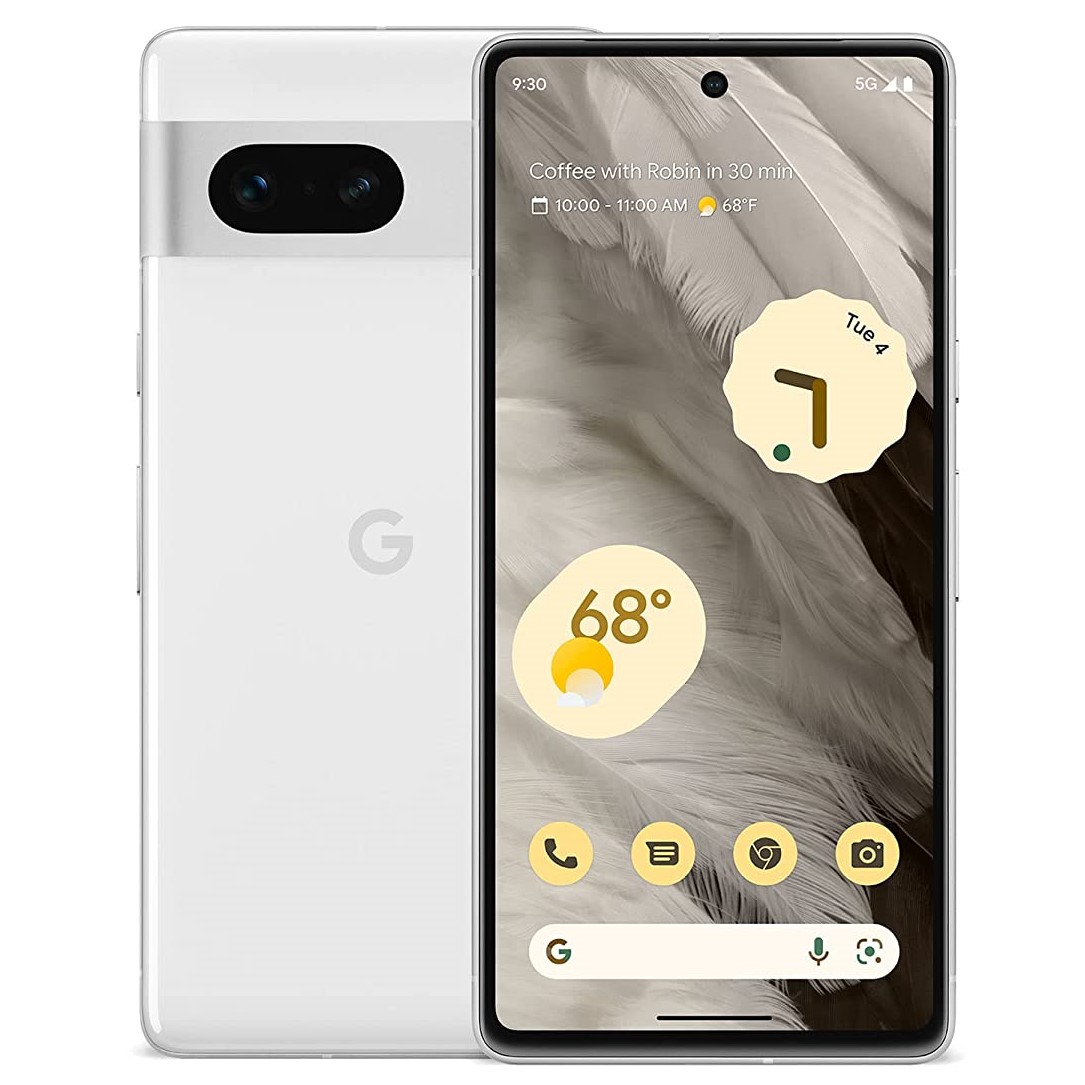
Fantastic value
The Pixel 7 is the ultimate value in Google's portfolio. It is powered by the latest Tensor G2 platform, and comes with a 50MP camera at the back joined by a 12MP wide-angle lens and all the AI-assisted features that Google rolled out, including Photo Unblur. You get a 6.3-inch 90Hz AMOLED screen, stereo sound, a gorgeous design with a two-tone finish, and a 4355mAh battery. If you want a smaller phone that delivers the best value, the Pixel 7 is the one to beat.
For
- Powered by the Tensor G2
- 90Hz FHD+ AMOLED screen
- Gorgeous design
- Outstanding cameras
- Android 13 with three platform updates
- Incredible value
Against
- No 5x zoom lens
- No bundled charger
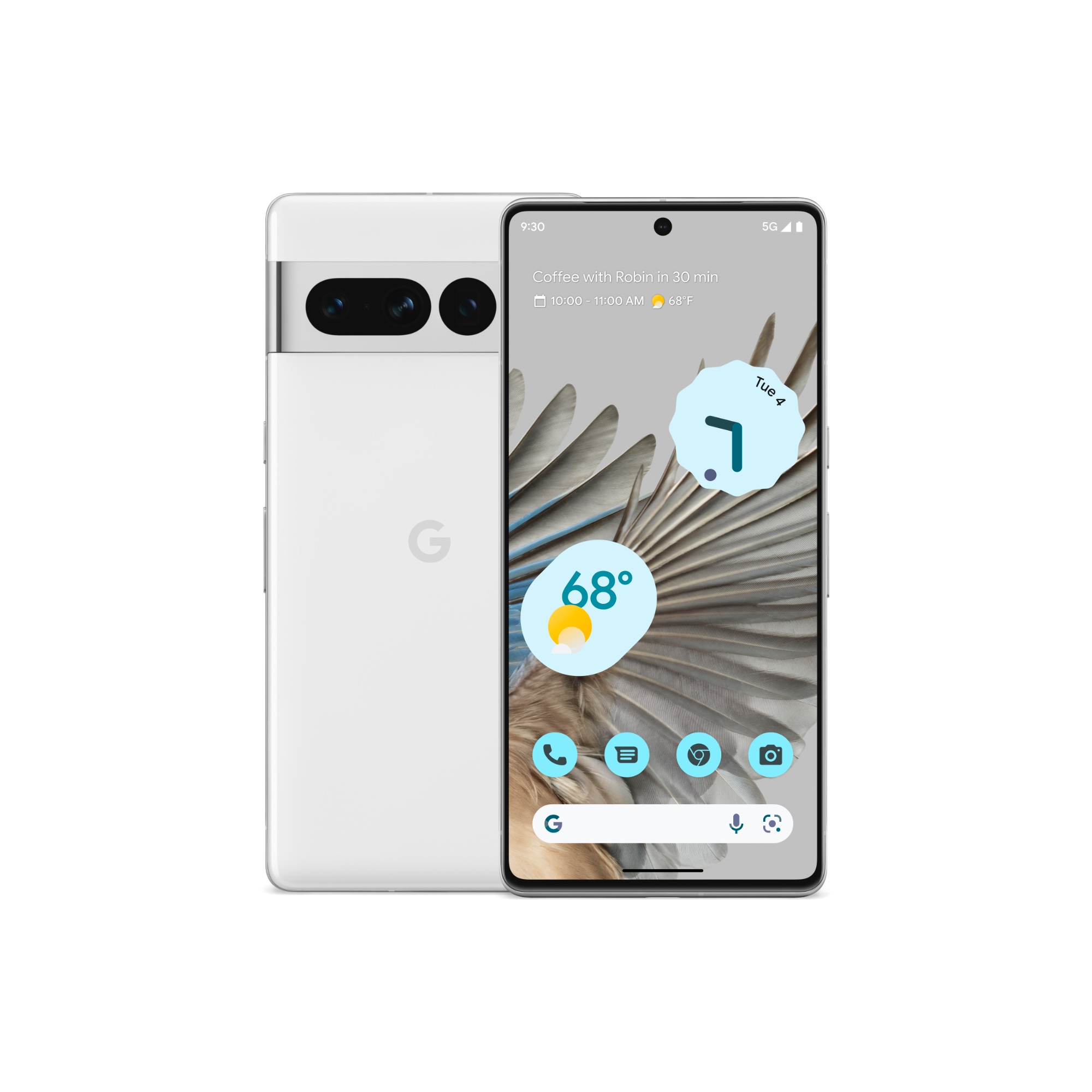
All the extras
The Pixel 7 Pro continues to lead the way if you need a phone that doesn't miss out in any area. The phone has a larger 6.7-inch QHD+ panel that goes up to 120Hz, and you get a 5000mAh battery as well. It is also powered by the Tensor G2 and has the same set of cameras, and you get an additional zoom lens that delivers 5x optical zoom. You are paying a little more for the larger size and the additional camera at the back, but if you want the best phone that Google has to offer, you should get the Pixel 7 Pro.
For
- Powered by the Tensor G2
- 120Hz QHD+ AMOLED screen
- Gorgeous design
- Outstanding cameras
- Android 13 with three platform updates
- 5x optical zoom module
Against
- Costlier than Pixel 7
- No bundled charger
The Pixel 7 and 7 Pro are here, and they showcase the best that Google has to offer in 2022. Like last year, Google hasn't limited the feature-set of the standard Pixel 7, with the phone offering the same 50MP camera and Tensor G2 as the costlier Pixel 7 Pro. So if you're interested in buying a new phone, here's what you need to know about Google's latest launches, and which one you should pick up.
Google Pixel 7 vs. Pixel 7 Pro: What's the same
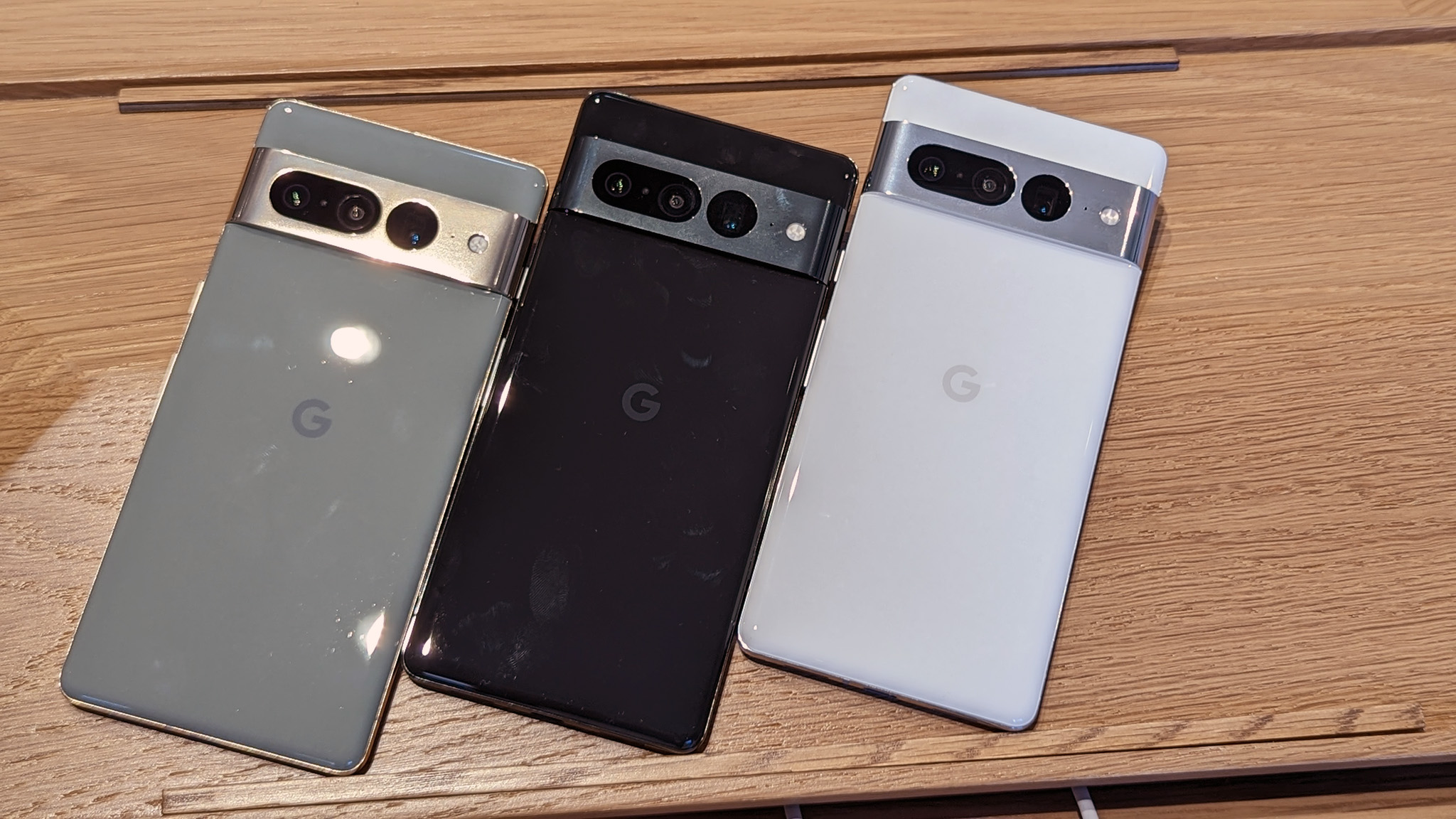
The Pixel 7 and Pixel 7 Pro build on the design aesthetic that Google introduced last year with the Pixel 6 series, with both phones featuring a large camera bar at the back with cutouts for the camera modules. The camera bar looks a little more striking this time thanks to the bold accent colors, and that makes the Pixel 7 and 7 Pro stand out just a little bit more.
Both phones share the same foundation, making the Pixel 7 all the more attractive.
Both devices use the same materials as well, featuring glass backs and an aluminum mid-frame. You get a layer of Gorilla Glass Victus covering the front and rear glass panes, and that should serve to give either device added resilience against tumbles. There's a SIM card slot on both phones, and you can use a secondary eSIM as well.
The Pixel 7 and 7 Pro feature IP68 dust and water resistance, and it's great to see Google retaining the feature on the standard variant. Stereo sound works the same way across the two devices, and they share the same connectivity: Wi-Fi 6e, Sub-6 5G in global markets, Bluetooth 5.2, and the AptX HD audio codec.
| Category | Google Pixel 7 | Google Pixel 7 Pro |
|---|---|---|
| OS | Android 13 | Android 13 |
| Display | 6.3-inch 90Hz AMOLED (2400x1080), 1400 nits HDR10+, Gorilla Glass Victus | 6.7-inch 120Hz AMOLED (3140 x 1440), HDR10+ 1500 nits, Gorilla Glass Victus |
| Chipset | Google Tensor G2, 2 x 2.85GHz Cortex X1, 2 x 2.35GHz Cortex A76, 4 x 1.80GHz Cortex A55, Mali-G710, 4nm | Google Tensor G2, 2 x 2.85GHz Cortex X1, 2 x 2.35GHz Cortex A76, 4 x 1.80GHz Cortex A55, Mali-G710, 4nm |
| RAM | 8GB | 12GB |
| Storage | 128GB/256GB | 128GB/256GB/512GB |
| Rear camera 1 | 50MP f/1.9, 1.2um pixels, PDAF, OIS | 50MP f/1.9, 1.2um pixels, PDAF, OIS |
| Rear camera 2 | 12MP f/2.2, 1.25um pixels, 114-degree wide-angle | 12MP f/2.2, 1.25um pixels, 120-degree wide-angle |
| Rear camera 3 | ❌ | 50MP f/3.5, 0.7um pixels, OIS, 5x optical zoom |
| Front camera | 10.8MP f/2.2, 1.22um pixels, wide-angle | 10.8MP f/2.2, 1.22um pixels, wide-angle |
| Connectivity | Wi-Fi 6e, Sub-6 5G, Bluetooth 5.2, NFC, AptX HD | Wi-Fi 6e, Sub-6 5G, Bluetooth 5.2, NFC, AptX HD |
| Ingress Protection | IP68 dust and water resistance | IP68 dust and water resistance |
| Security | In-screen module | In-screen module |
| Audio | Stereo sound, USB-C | Stereo sound, USB-C |
| Battery | 4355mAh, 30W wired charging, 20W wireless charging, 5W reverse wireless charging | 5000mAh, 30W wired charging, 20W wireless charging, 5W reverse wireless charging |
| Dimensions | 155.6 x 73.2 x 8.7mm, 197g | 162.9 x 76.6 x 8.9mm, 212g |
| Colors | Lemongrass, Obsidian, Snow | Hazel, Obsidian, Snow |
The charging tech is the same as well, with both devices offering 30W wired charging, 20W wireless charging, and 5W reverse wireless charging. You won't find a 3.5mm jack or MicroSD slot on either device, and there's no charger in the box as well — you'll have to buy your own.
You get Google's incredible Tensor G2 on both devices, enabling a whole suite of AI-assisted use cases.
These similarities extend to the hardware as well, with both devices sharing the same foundation. You'll find Google's latest Tensor G2 platform at the core of both phones, and it unlocks a suite of new ML use cases like Photo Unblur, a utility that denoises photos and reduces blurriness regardless of what phone was used to take the photo.
The Tensor G2 is fabricated on a 4nm node like the Dimensity 9000+ and the Snapdragon 8+ Gen 1, but it uses the older Cortex X1, A76, and A55 cores. It's clear that the focus for Google with this generation is on delivering the best set of AI-backed features on a phone, and that's what we see on the Pixel 7 and 7 Pro.
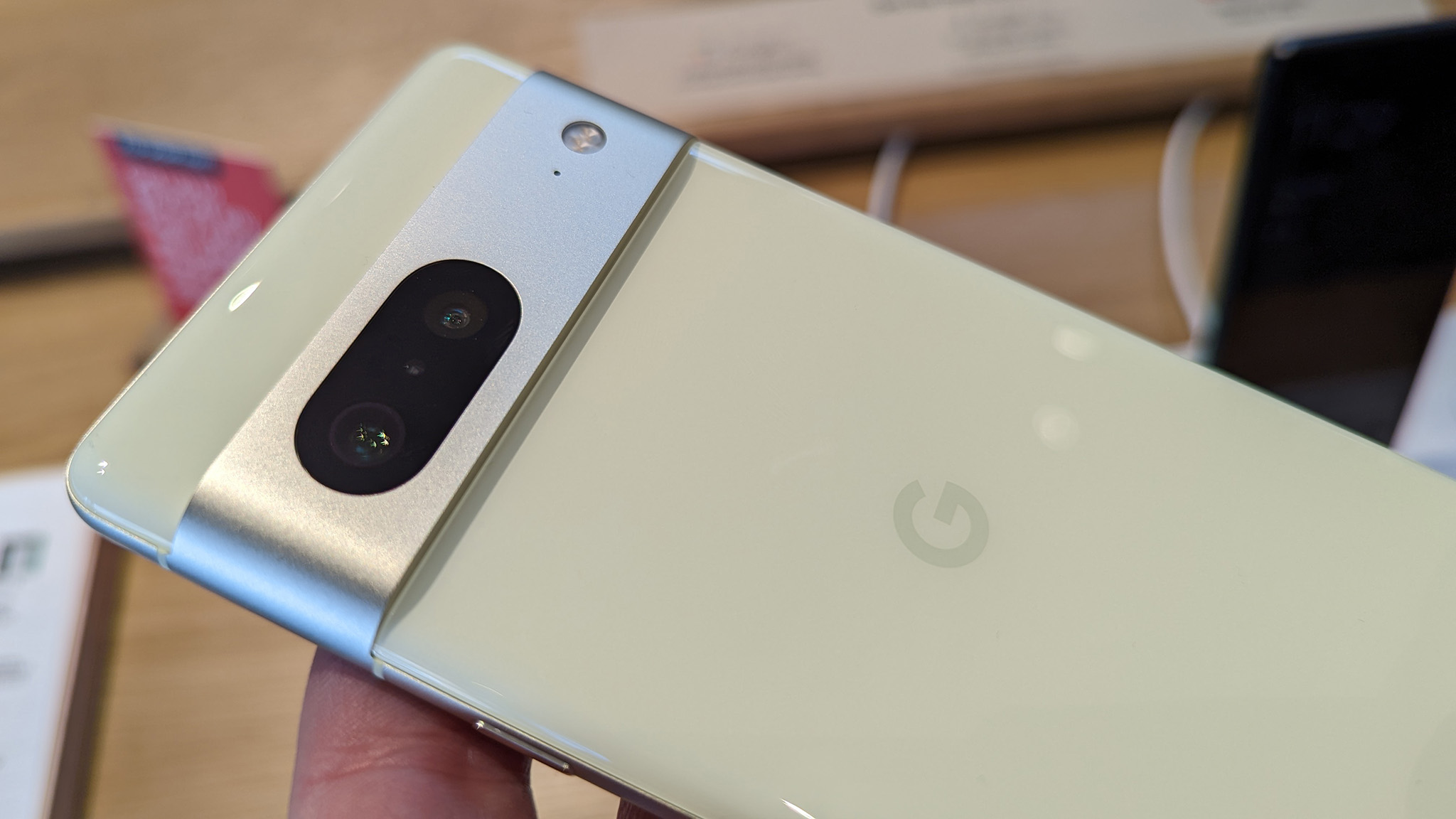
Cameras have always been a huge area of focus for Google, and the Pixel 7 and 7 Pro have a lot to offer. Both phones have the same 50MP main camera along with a 12MP wide-angle lens, and they share a new 10.8MP camera at the front that has a wider filed of view, making it ideal for taking wide-angle selfies.
The Pixel 7 and 7 Pro share the same 50MP camera and a new 10.8MP module at the front.
Google is touting a slew of upgrades on the camera front, giving the Pixel 7 and 7 Pro a leg up over the best Android phones in this regard. The new additions include better video stabilization, 10-bit HDR videos, overhauled night mode for better low-light shots, and 4K video at 60fps across all lenses.
I'll share a few photos shortly after getting my hands on both devices, and while the Pixel 7 Pro is more versatile in this area, the standard Pixel 7 should take the same caliber of photos with the main camera, and that's a fantastic achievement considering the phone costs just $599.
Finally, both phones launched with Android 13, and will get five years of security updates and three platform updates.
Google Pixel 7 vs. Pixel 7 Pro: What's different
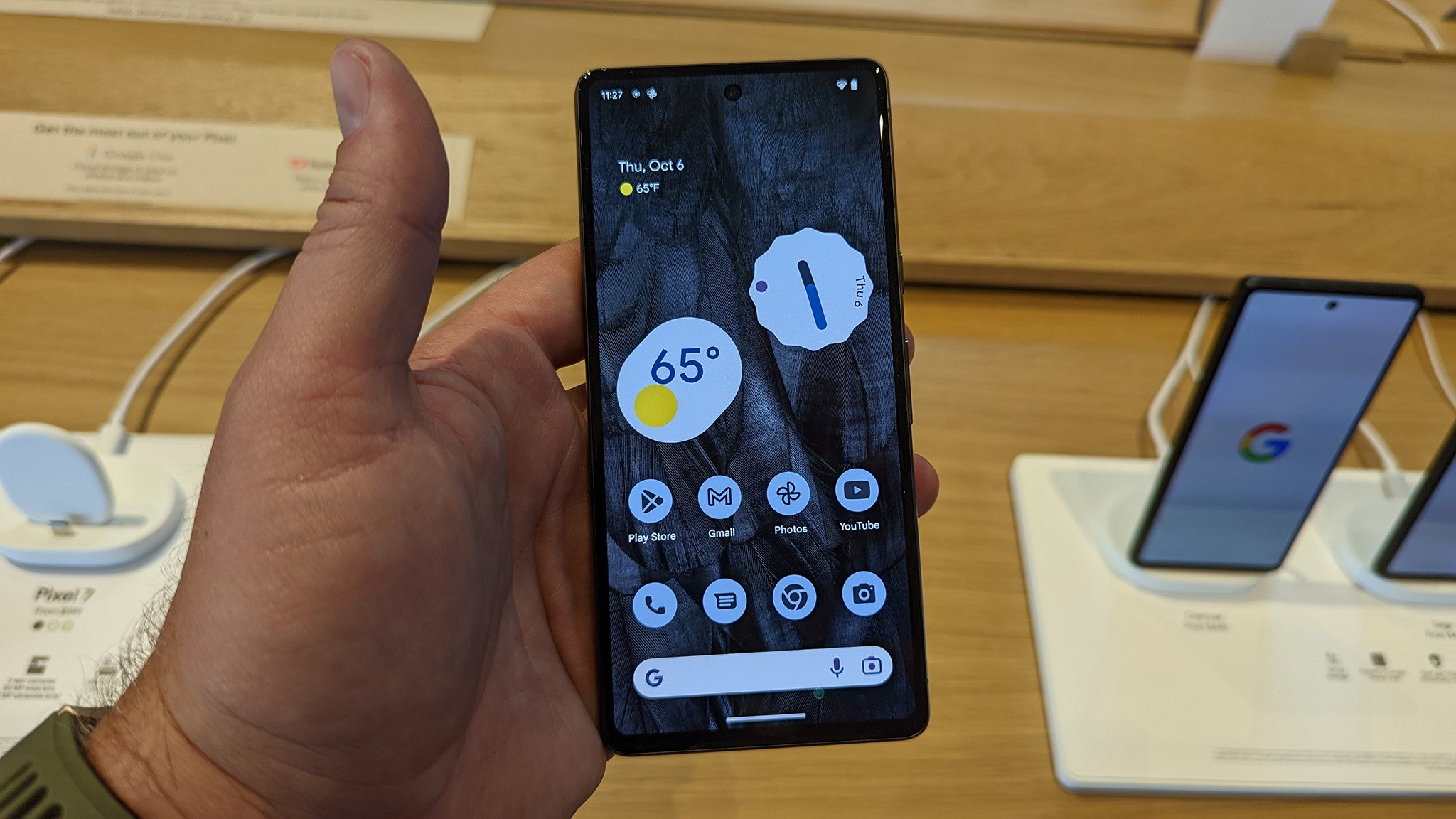
The key difference between the Pixel 7 and 7 Pro is the size. The Pixel 7 has a smaller design, and while it isn't as diminutive as the Zenfone 9, it is well-suited for one-handed use. The Pixel 7 Pro, meanwhile, is larger and heavier, but you get a larger battery.
The Pixel 7 is smaller and ideally suited for one-handed use, while the Pixel 7 Pro has a bigger screen and much larger battery.
The Pixel 7 is 7.3mm shorter and 3.4mm narrower than the 7 Pro, and that makes a sizeable difference in daily use. There's also a 15g difference in weight between the two models, so if you're inching toward a smaller phone, the Pixel 7 is the obvious choice here.
That said, the Pixel 7 Pro has a larger 6.7-inch AMOLED screen with 120Hz refresh, and Google's dynamic scaling tech automatically switches refresh between 10 - 120Hz based on the content on the screen. The phone comes with a QHD+ panel as well, with a resolution of 3140 x 1440.
The Pixel 7, meanwhile, has a smaller 6.3-inch AMOLED panel that goes up to 90Hz, and you get an FHD+ (2400 x 1080) resolution. Both phones have vibrant panels and deliver outstanding color accuracy, but if you want a larger screen with a higher refresh, you should get the Pixel 7 Pro.
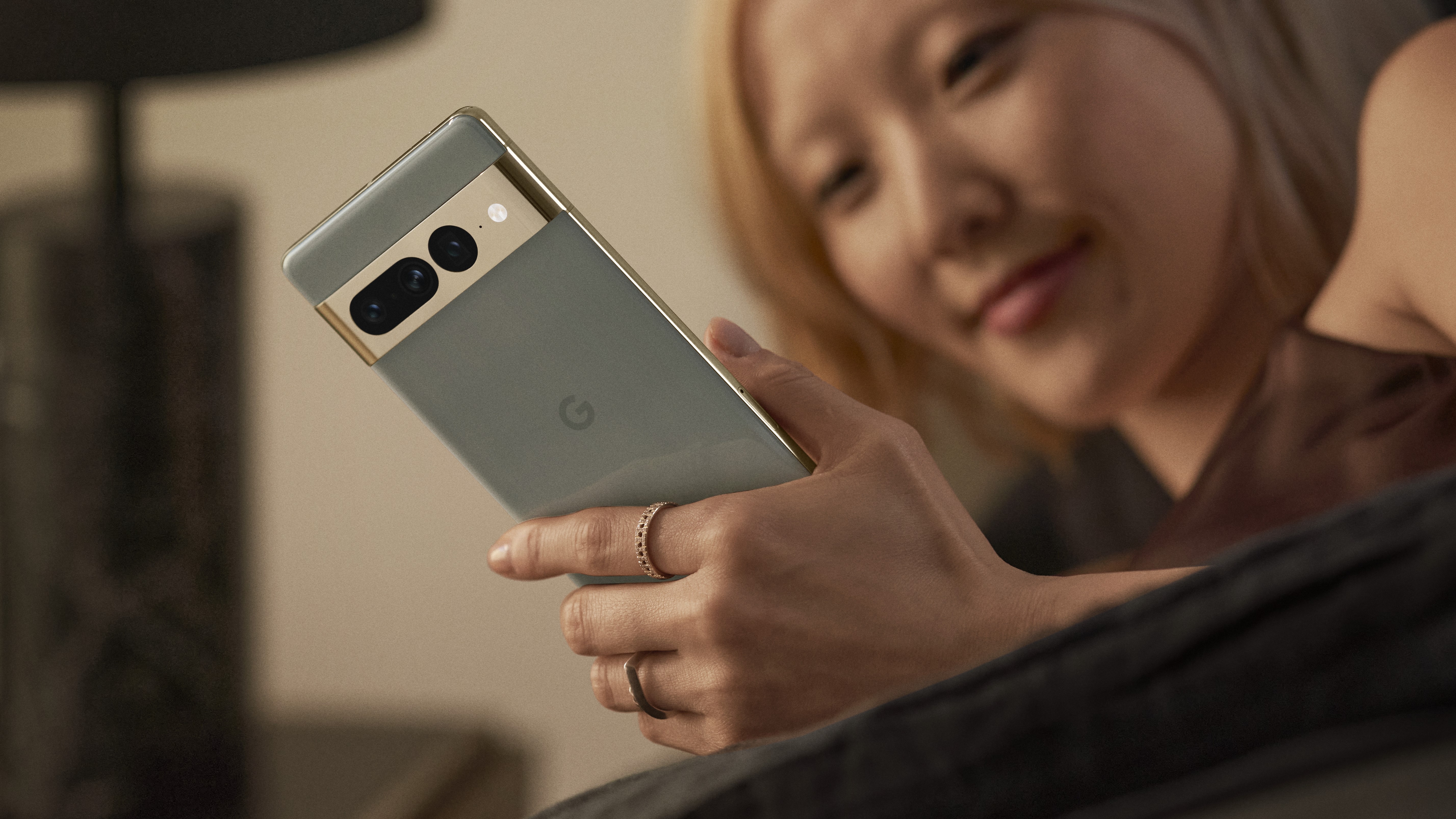
Because of the larger size of the device, Google was able to fit a larger battery in the Pixel 7 Pro. The phone has a 5000mAh battery, while the standard Pixel 7 has a 4355mAh unit. Both devices should easily last a day without any hassle, but the larger battery gives the 7 Pro more headroom in this area.
The biggest advantage to the Pixel 7 Pro is the 5x optical zoom lens.
Although both devices share the same 50MP camera and 12MP wide-angle lenses, the Pixel 7 misses out on a zoom module. The Pixel 7 Pro gets a 48MP telephoto lens that delivers 5x optical zoom, and Google rolled out a host of changes to its software algorithms to offer cleaner photos with less noise at 5x zoom.
If you need a zoom lens, the Pixel 7 Pro is the only choice from Google this year. Finally, the Pixel 7 Pro gets a few additional extras, like UWB, and 12GB of RAM as standard. Both phones have 128GB of storage for the base variant, but the Pixel 7 gets 8GB of RAM while the 7 Pro gets 12GB across the board. It is also available with 512GB of storage, with the Pixel 7 going up to 256GB.
Google Pixel 7 vs. Pixel 7 Pro: Which should you buy?
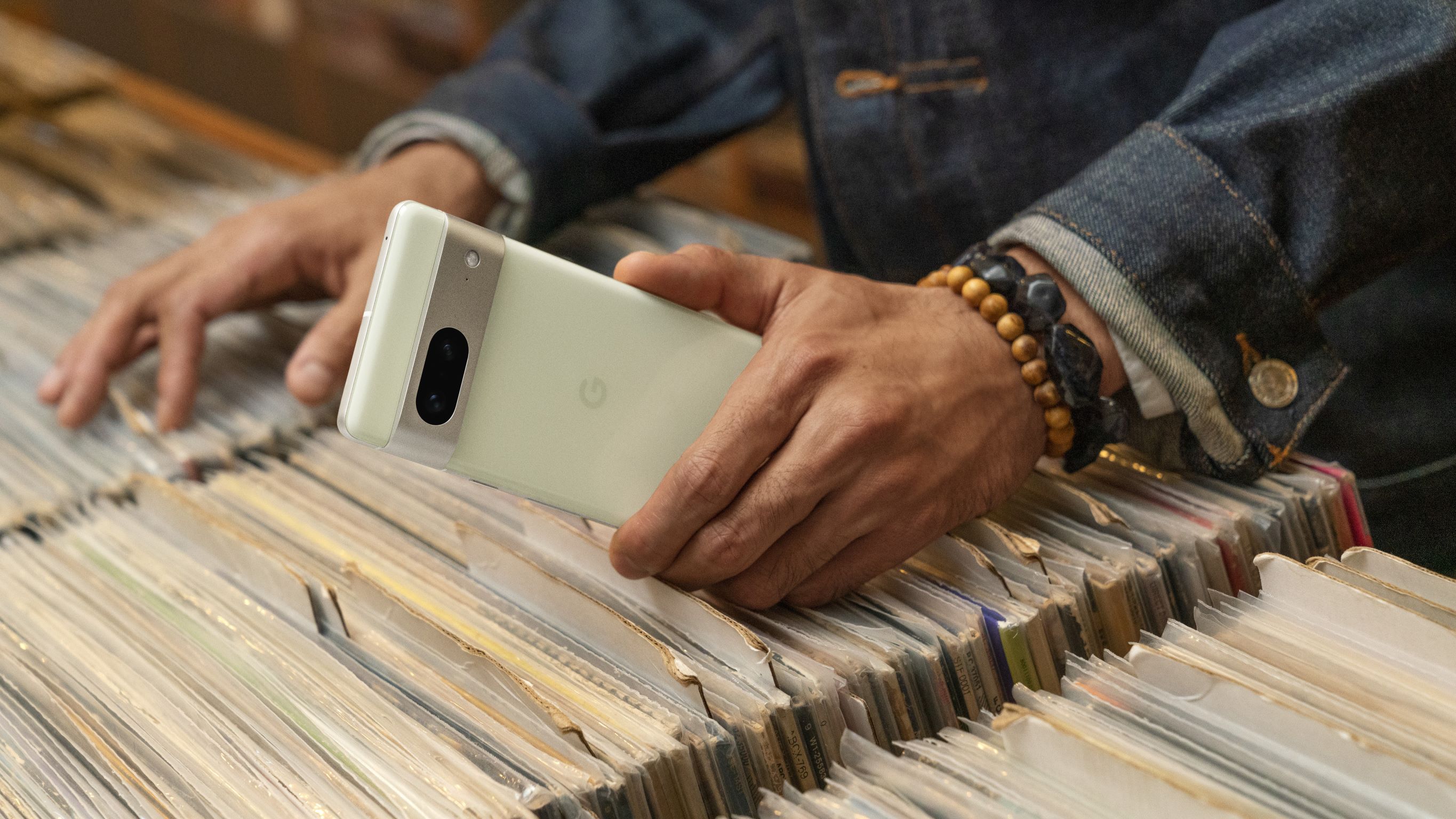
For the second year in a row, Google has done a great job making sure that the standard variant doesn't miss out in any key area. The Pixel 7 is powered by the same Tensor G2 platform, has the same primary and wide-angle lens as the Pixel 7 Pro, and shares the same design. The fact that it is smaller makes it all the more enticing, and the best part is that at $599, it is an outstanding value.
If you want the best value, get the Pixel 7. If you need a larger 120Hz screen and a zoom lens, the Pixel 7 Pro is the way to go.
The Pixel 7 has a smaller 6.3-inch FHD+ 90Hz panel while the Pixel 7 Pro gets a larger 6.7-inch screen with QHD+ resolution that goes up to 120Hz. Because of the smaller size, the Pixel 7 has a 4355mAh battery, while the Pro model gets a 5000mAh unit. The biggest difference between the two is that the Pixel 7 misses out on the 5x optical zoom lens at the back.
If you don't see yourself needing a zoom lens or want a smaller phone, the Pixel 7 is the default option. The Pixel 7 Pro has a higher-res screen that's smoother and you get all the extras, but you are paying more — the device costs $899, $300 more than the Pixel 7.

Fantastic value
Featuring Google's latest Tensor G2 platform and a fabulous 50MP camera alongside a 12MP wide-angle lens, the Pixel 7 absolutely nails the basics. The smaller size makes it ideal for one-handed use, and the fact that it costs just $599 makes it an outstanding value when you consider the cameras on offer.

All the extras
The Pixel 7 Pro uses the same foundation as the Pixel 7, but you get a larger 6.7-inch screen with higher 120Hz refresh, and a higher resolution panel. You also get a zoom lens at the back with 5x optical zoom, and a larger 5000mAh battery that should last well over a day with ease.
Be an expert in 5 minutes
Get the latest news from Android Central, your trusted companion in the world of Android

Harish Jonnalagadda is Android Central's Senior Editor overseeing mobile coverage. In his current role, he leads the site's coverage of Chinese phone brands, networking products, and AV gear. He has been testing phones for over a decade, and has extensive experience in mobile hardware and the global semiconductor industry. Contact him on Twitter at @chunkynerd.
